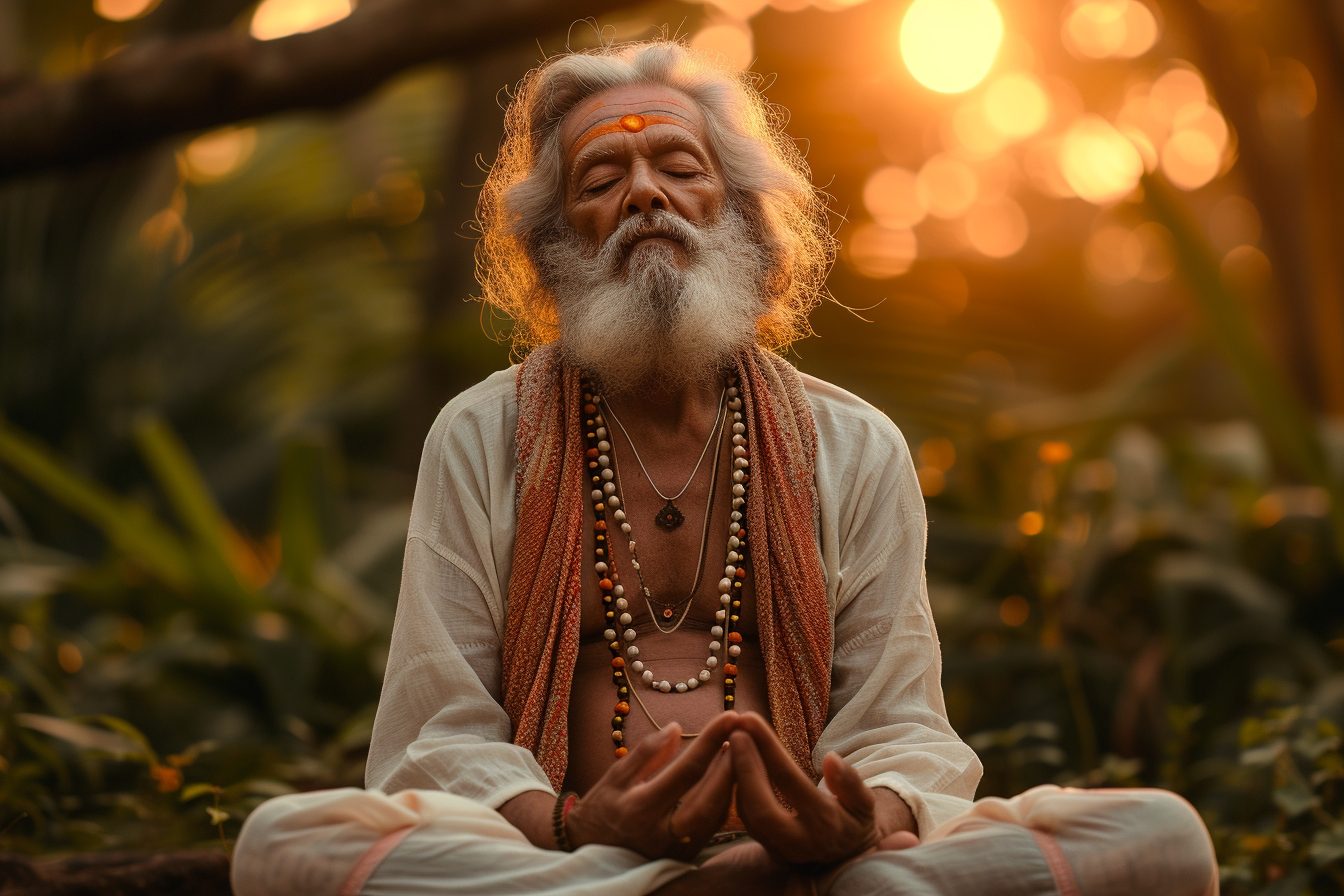
The practice of yoga transcends physical postures, diving deep into the realms of breath control, known as Pranayama. Pranayama, a Sanskrit word meaning "extension of the prāṇa or breath" or "extension of the life force," forms a core pillar of yoga. Distinct from casual breathing, yogic breathing techniques harness the ability to influence the flow of prana (life energy) throughout the body, impacting both physical and mental well-being.
Insights into yogic breathing
The anatomy of breath
Yogic breathing is more than a physical act; it is an intimate engagement with the subtle channels of energy within. The diaphragm, lungs, and even the blood vessels play critical roles in this process. As one delves into yogic breathing, awareness expands from the shallow chest breathing in day-to-day life to a more profound and revitalizing diaphragmatic breathing.
The philosophy and goals
In yogic philosophy, breath is the intermediary between the mind and the body. Pranayama practices aim to calm the mind, prepare for meditation, and cleanse and balance the energy channels or nadis. By mastering breath control, one can regulate the emotional state, enhance concentration, and promote a deep sense of peace.
A spectrum of techniques for diverse outcomes
Ujjayi breath: the ocean’s whisper
Often termed the "ocean breath," Ujjayi Pranayama is characterized by a soft hissing sound made during inhalation and exhalation. This is achieved by constricting the back of the throat, similar to the process of fogging a mirror. Ujjayi breath is a warming practice that builds internal heat and can be particularly beneficial for sustaining concentration during longer holds in asanas (yoga poses).
Nadi shodhana: pathway purification
Nadi Shodhana, or alternate nostril breathing, involves a rhythmic pattern of inhaling and exhaling through one nostril at a time while the other is lightly closed with the fingers. This practice has an almost immediate effect on calming the mind, reducing stress, and balancing the left and right hemispheres of the brain, promoting a state of equanimity and centeredness.
Kapalabhati: the shining skull
Kapalabhati Pranayama, nicknamed the "skull shining breath," involves a series of rapid, forceful exhalations followed by passive inhalations. This energetic practice invigorates the body, clears the mind, and is often credited with detoxifying the lungs and respiratory pathways.
Bhramari: the humming bee
Within the tranquility of Bhramari Pranayama, practitioners produce a humming sound on exhalation, reminiscent of the gentle buzz of a bee. This technique profoundly calms the nervous system, reduces stress, and can even have therapeutic effects on the thyroid gland due to the vibrations caused in the throat.
Embarking on the pranayama journey
As with any profound discipline, the nuances of Pranayama require a thoughtful approach. Beginners are encouraged to start with guidance from a seasoned instructor, ensuring correct technique and avoiding potential contraindications.
Setting the scene
A peaceful environment augments the Pranayama experience. Choose a quiet, airy space with comfortable seating. Seated postures such as Sukhasana (Easy Pose), Vajrasana (Thunderbolt Pose), or even sitting on a chair with a straight spine are ideal for Pranayama practice.
Integration with asana practice
Yogic breathing can also be woven seamlessly into the fabric of asana practice. Breath acts as an anchor in each movement, creating a flow that is both rhythmic and meditative. Mastery of breath control during asana practice enhances the benefits of the poses and deepens the overall yogic experience.
The multifaceted benefits of yogic breathing
Physiological enhancements
Yogic breathing is a potent tool for improving respiratory function, increasing oxygenation of the blood, and boosting vitality. The techniques can also have a positive impact on heart rate variability, a marker of cardiovascular health and autonomic nervous system balance.
Psychological well-being
Stress and anxiety are ever-present in modern life, and Pranayama offers a sanctuary of relief. These intentional breathing practices trigger a relaxation response, mitigating the insidious effects of the stress hormone cortisol. The result is a refreshed mind, clarity of thought, and an inherent resilience against the strains of daily life.
Spiritual connection
Beyond the tangible, Pranayama is a vehicle for enhancing spiritual awareness and connection. The subtle control and manipulation of prana are believed to awaken dormant energies within, leading toward higher states of consciousness and spiritual enlightenment.
Advancing in pranayama practice
With patience and consistency, the depth of Pranayama can be quite extraordinary. Advancements in practice may include longer durations of breath retention, incorporation of bandhas (energy locks), and exploration of less common techniques. Each step forward offers an opportunity for a richer understanding of the self and a more intimate connection with the breath.
Continuous pathway to inner tranquility
Yogic breathing stands as a timeless testimony to the symbiosis between the body and the mind, highlighting breath as the most essential and potent link. As practitioners breathe with intention and awareness, they embark on a continuous journey toward equilibrium, vitality, and inner tranquility.
Through the mastery of Pranayama, one encounters a deeper sense of self, an impenetrable calm, and enduring wellness. The path of yogic breathing is infinite; each breath is a step towards a more harmonious existence, a more profound understanding of life’s rhythms, and an unwavering state of peace. With consistent practice, these ancient techniques of breath shape not only our physical health but also sculpt our mental landscape, leading to a life expressed with more depth, meaning, and serenity.